
Where We Be
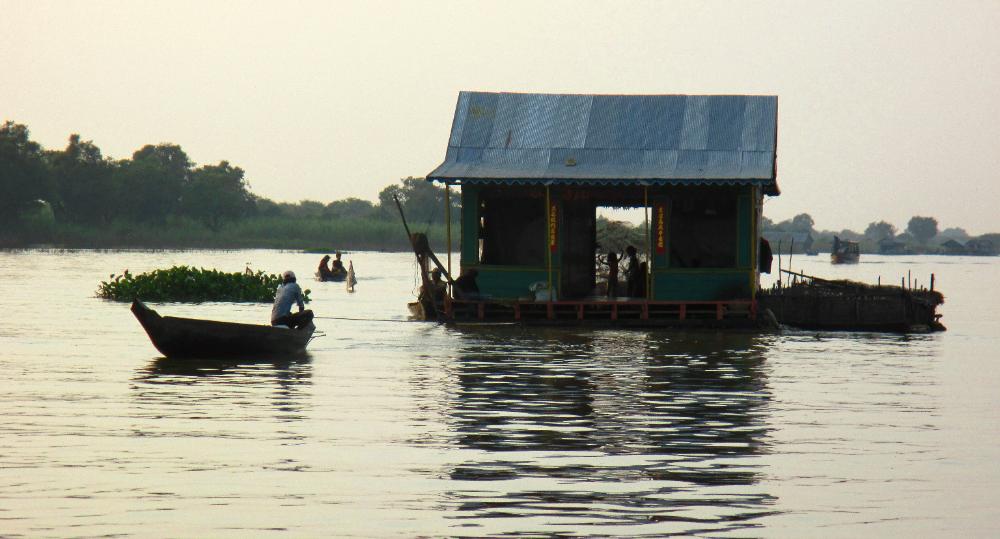
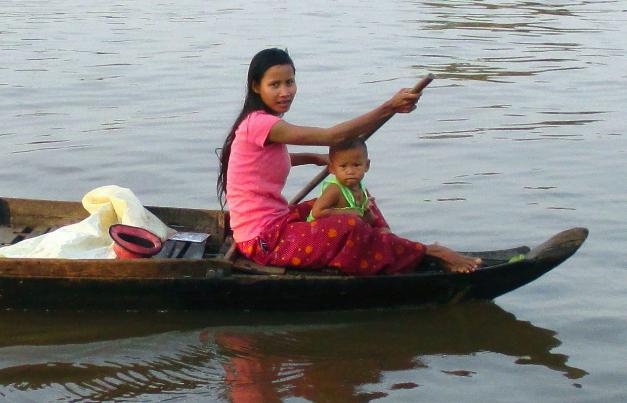
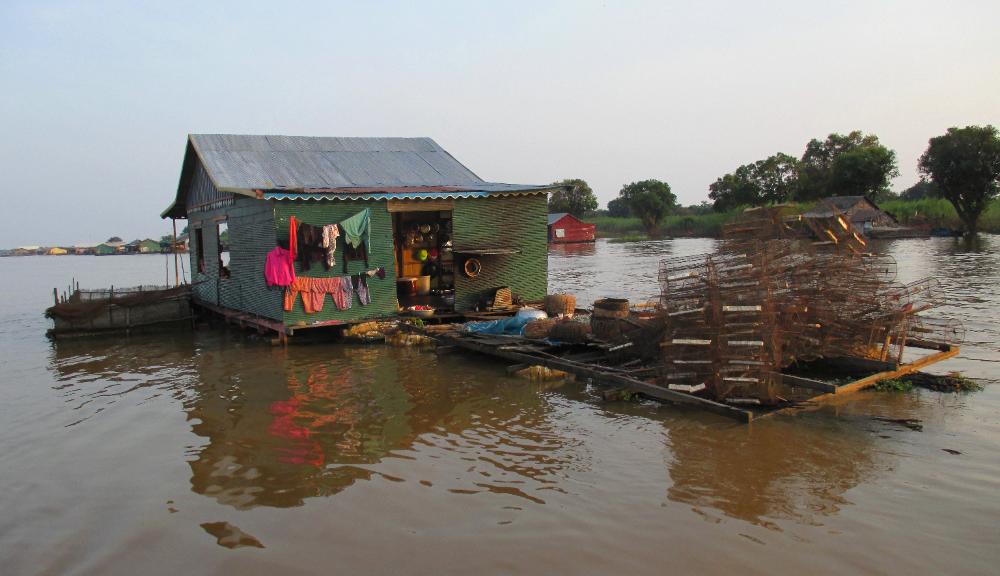
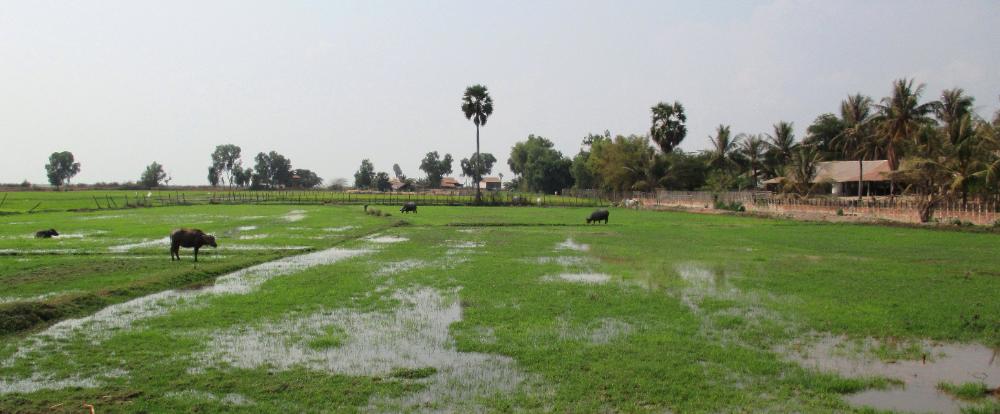
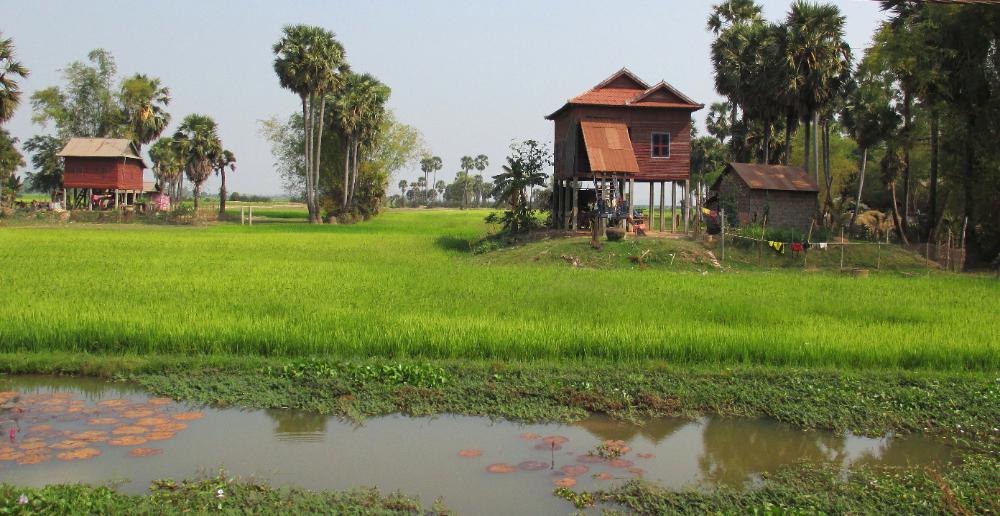
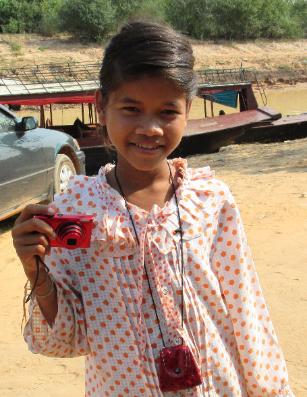
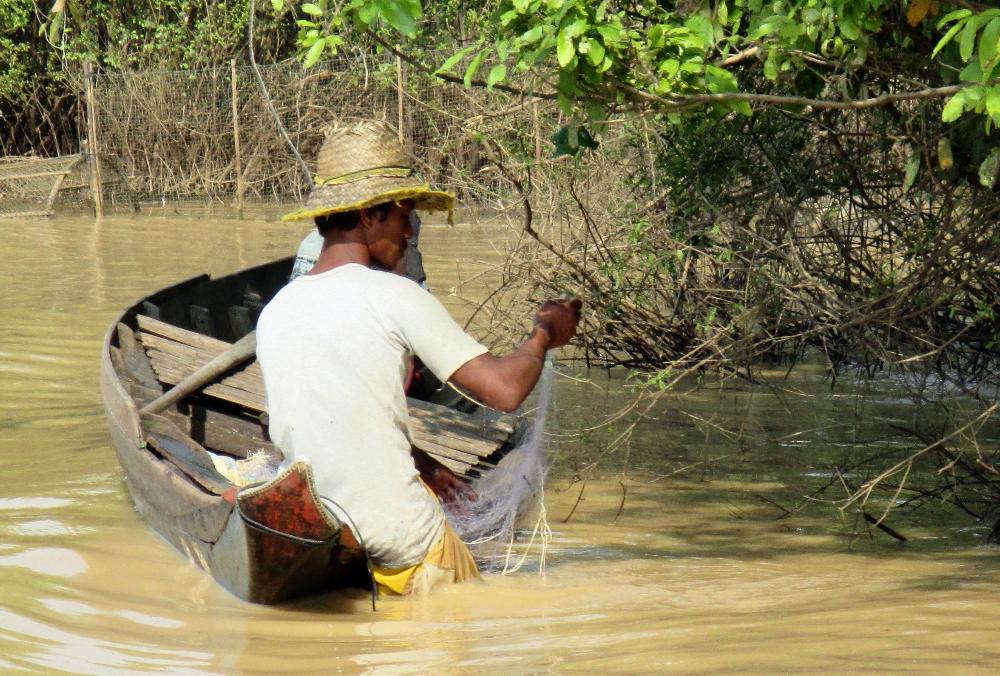
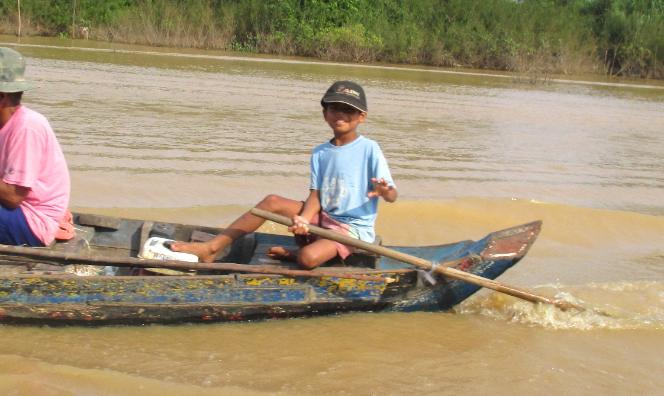
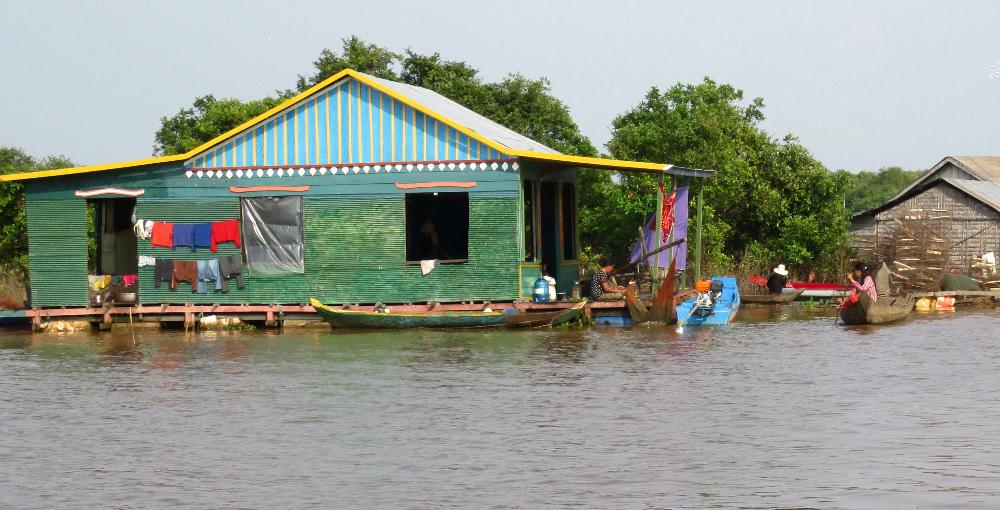
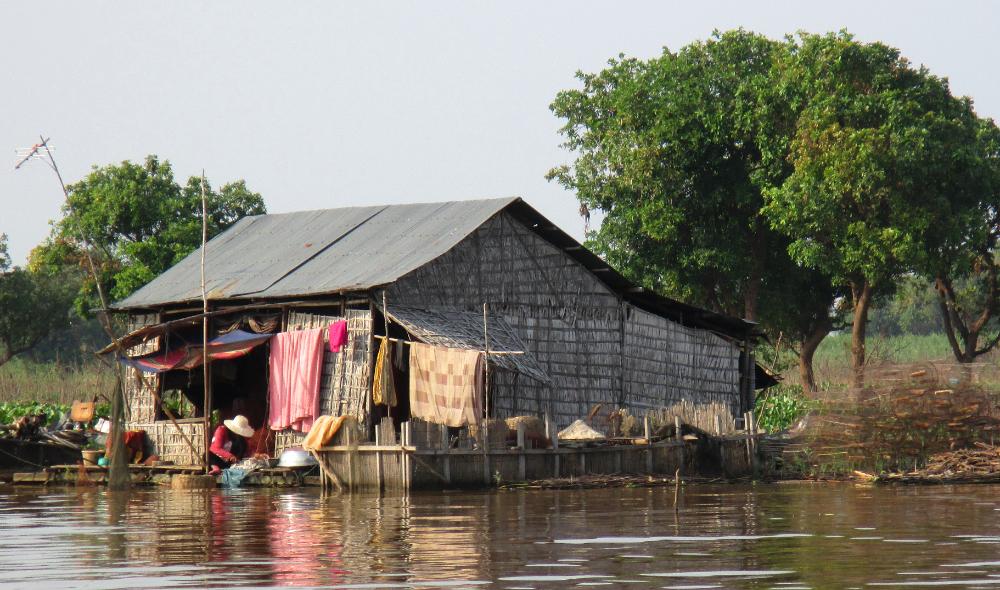
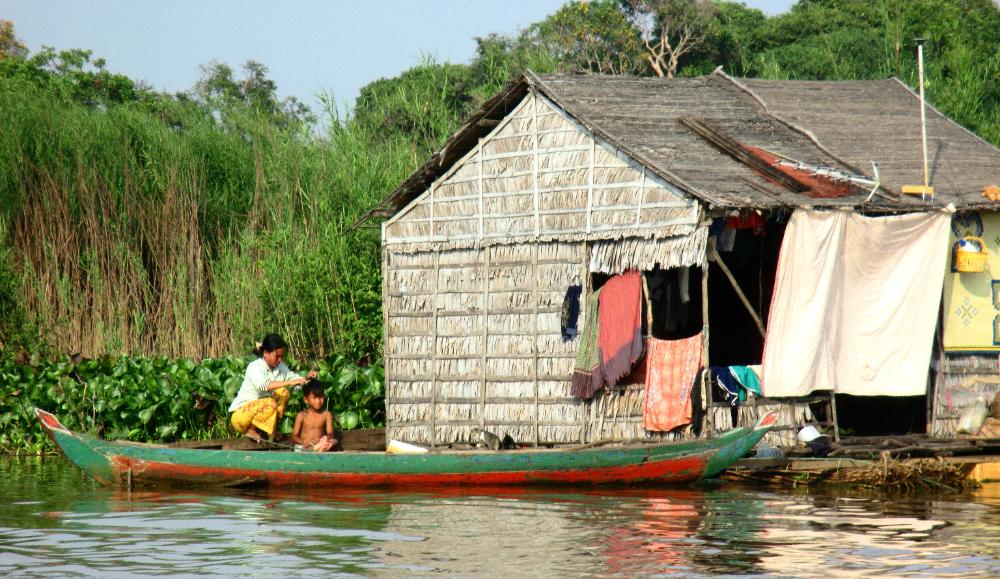
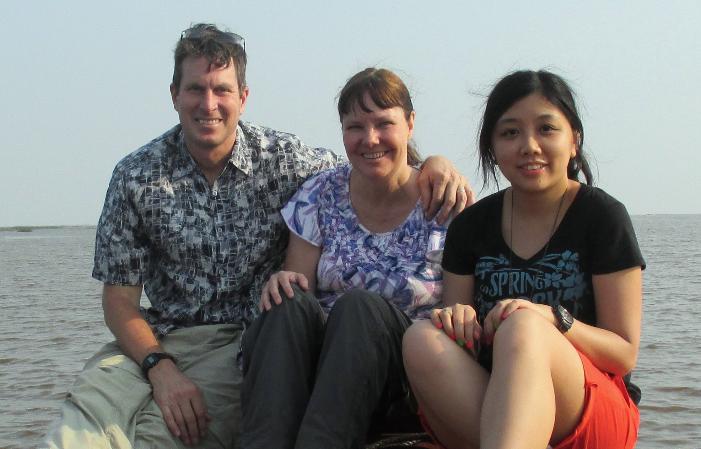
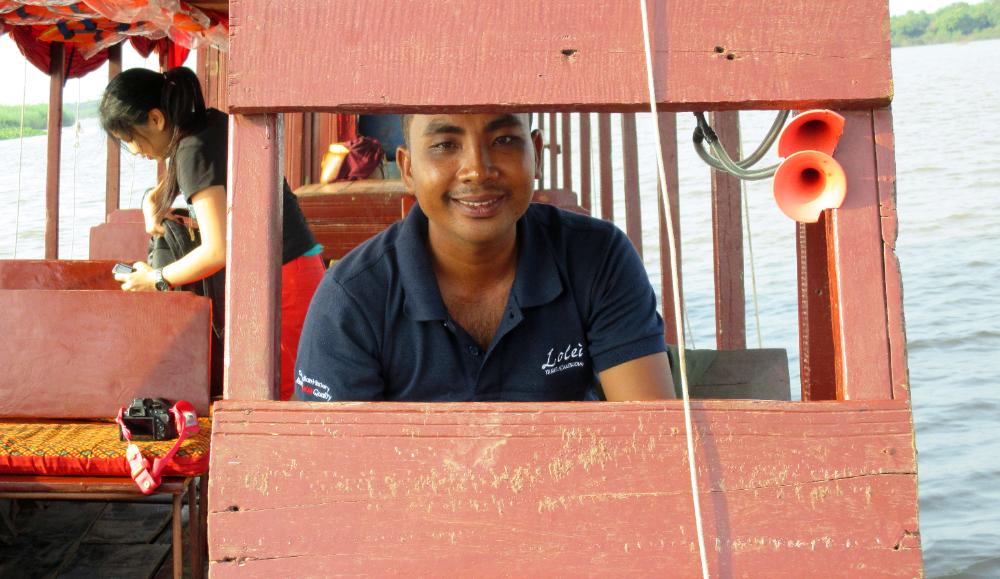
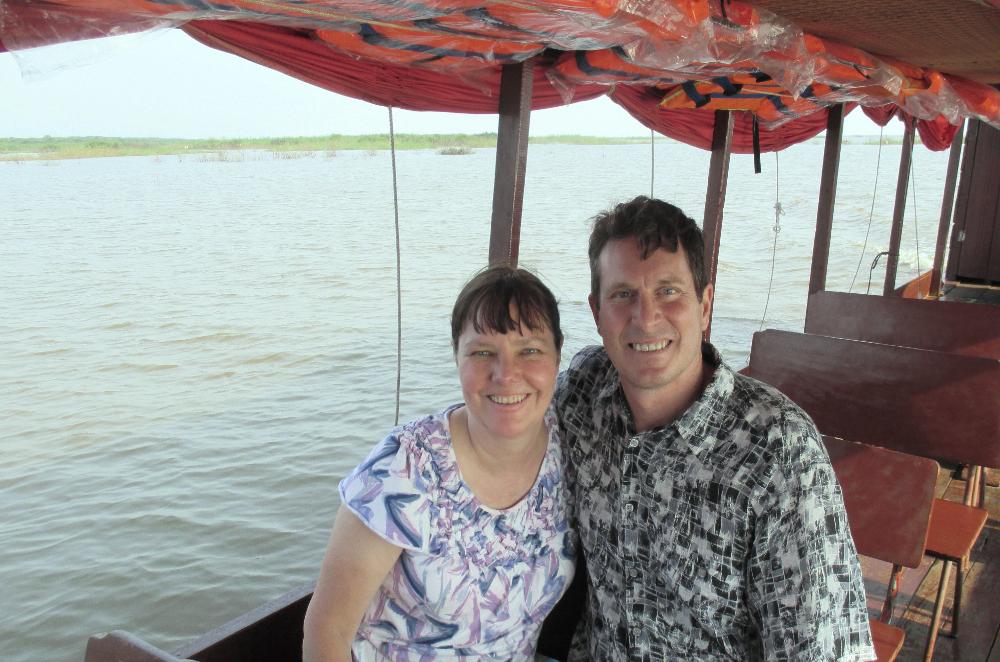
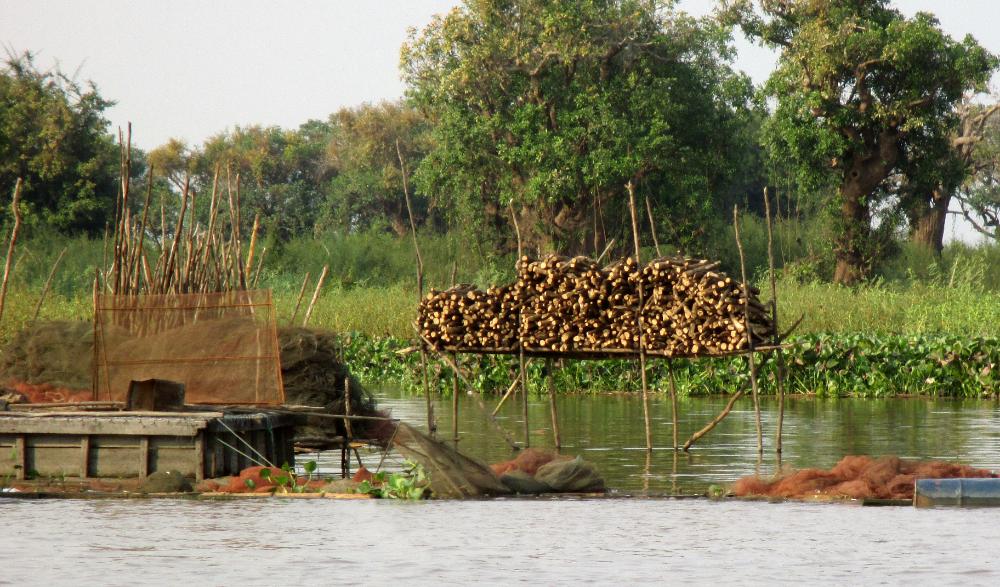
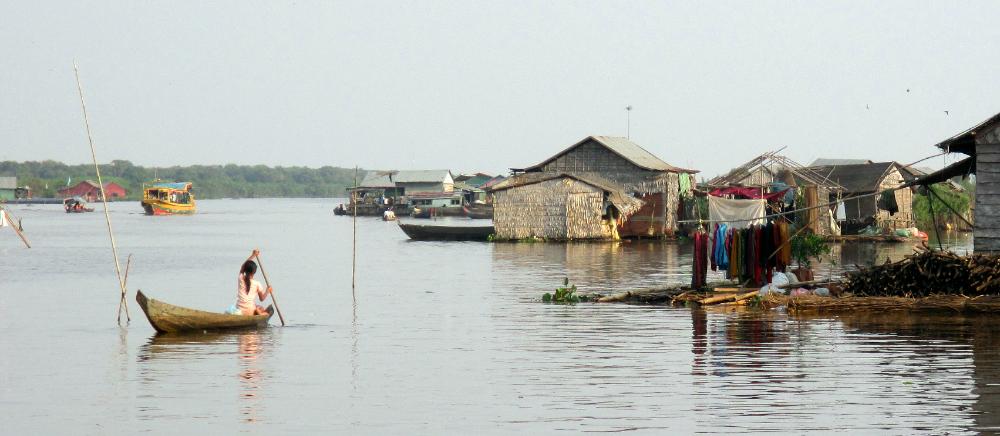
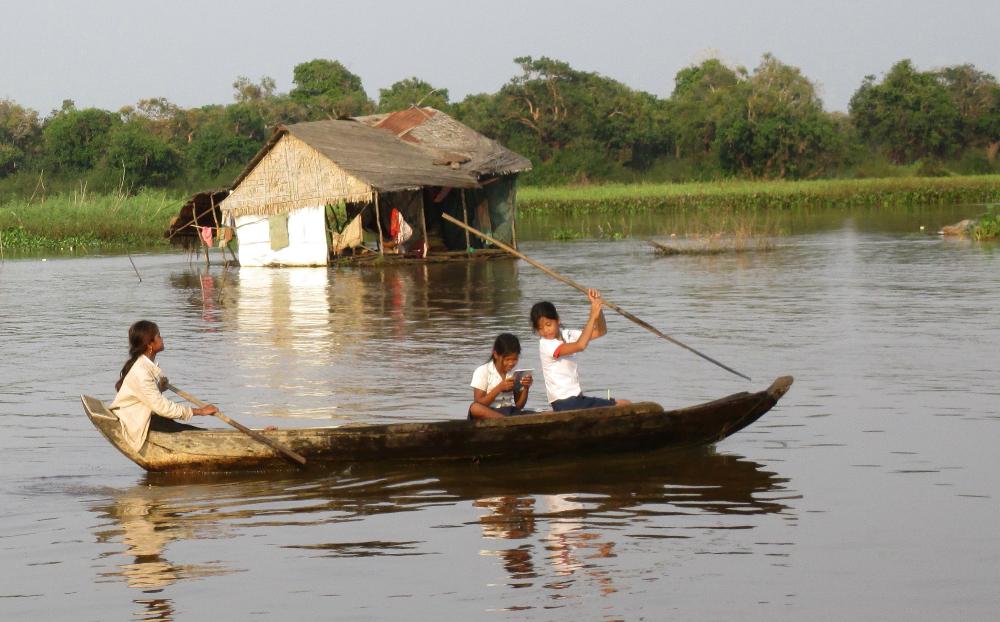
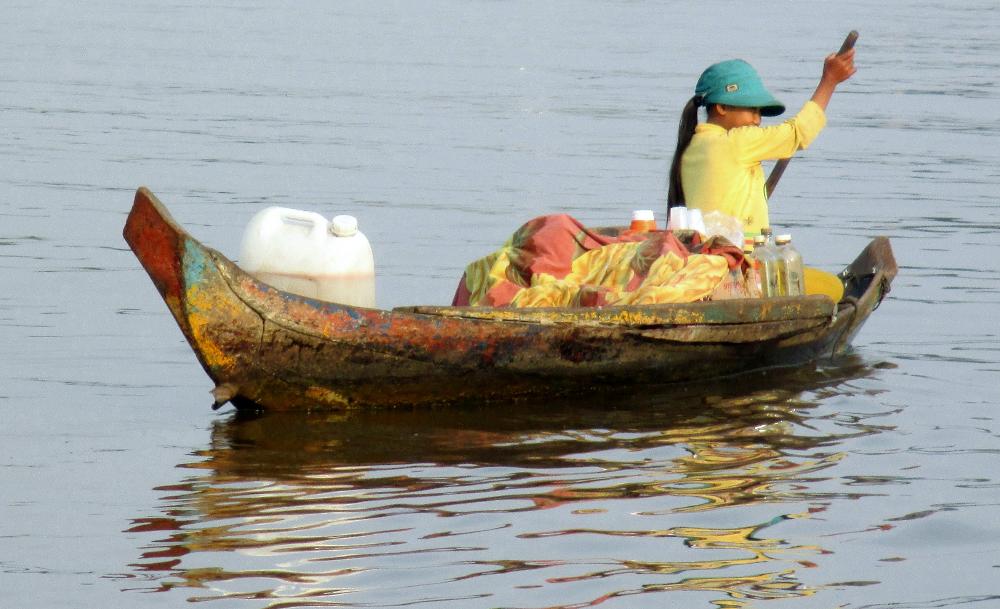
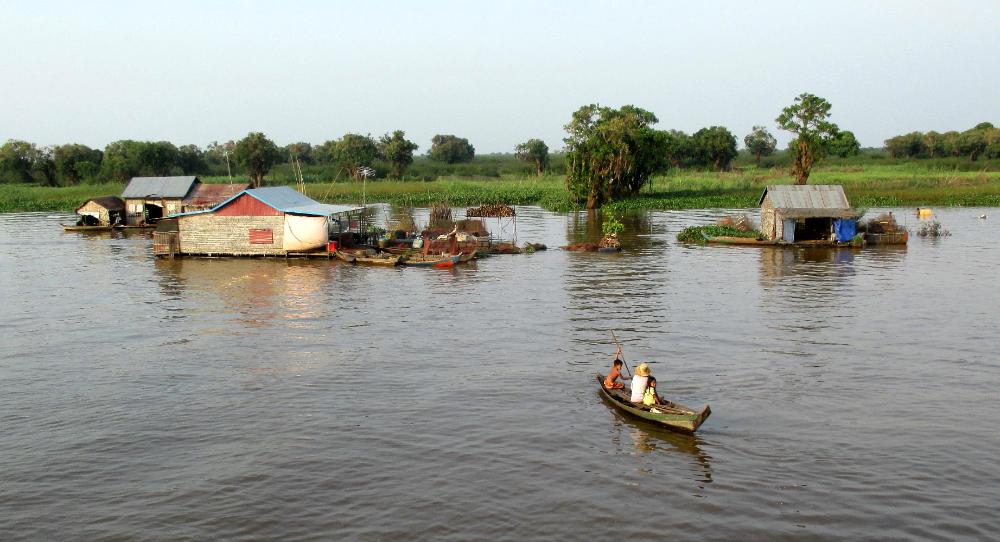
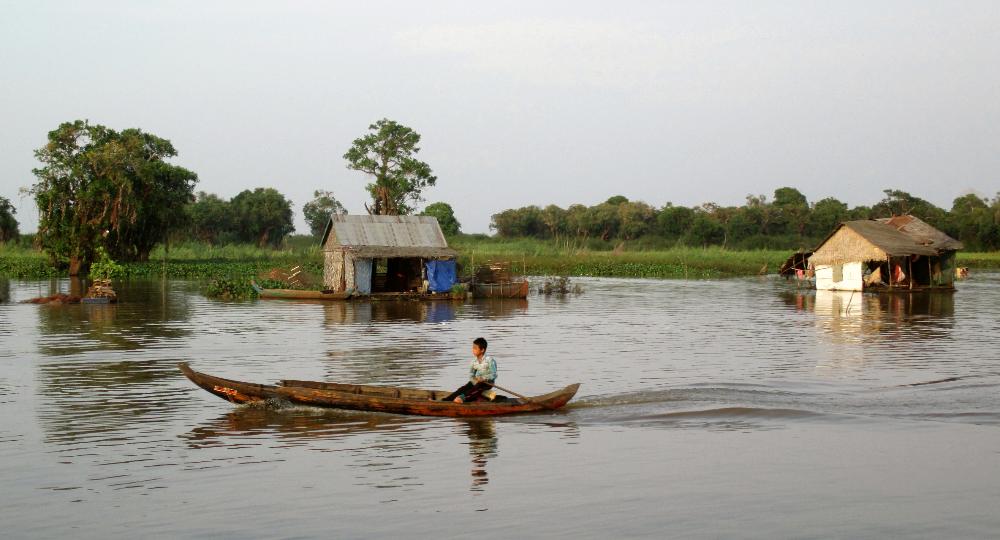
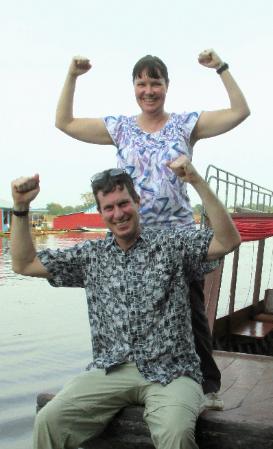
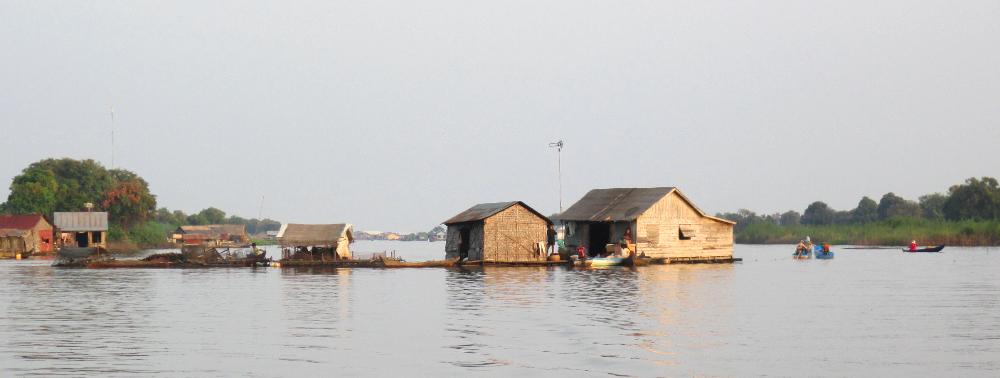
| As his mom rows him home, this youngster stares intently at us, finding US strange, thinking nothing of the fact he lives on a floating home that migrates twice a year |
| Tonle Sap Floating Village, Cambodia |
| The river widens further as it joins the lake. Here, instead of individual floating homes, there's a whole village of them. |
| I love these kids rowing home from school and checking out their iPad at the same time! |
| This young woman gets extra credit for color coordinating with her boat |
| A young boy takes the helm and rows his family home |
| What kid wouldn't love to have his own motor boat to putter around in? |
| Our new friend Vivian from Hong Kong encourages us to take silly pictures as we relax for an hour at a floating restaurant |
| On our way back we come across this floating home -- with its occupants still inside -- being towed by boat to a new location on the Tonle Sap |
| The "back yard" also gets towed behind the home |
| Here is a whole series of floating homes and shacks, all tied together, being towed down the river. This home migration happens at least twice a year as the Tonle Sap dramatically rises and falls. |
| The tuk-tuk ride is its own adventure as you putt along, passing pedestrians and bikes and getting passed by buses, cars, and motorcycles. You never know what you'll see next. |
| Smiling faces are the norm in Cambodia; the quality of life is improving here and people seem to be happy by nature |
| Getting to Tonle Sap by tuk-tuk takes about an hour from Siem Reap. Early on, our driver pulled over for some gas. These recycled 1- and 2-liter bottles (Coke, whiskey, etc.) are filled with gas and ready to be poured into the tuk-tuk. |
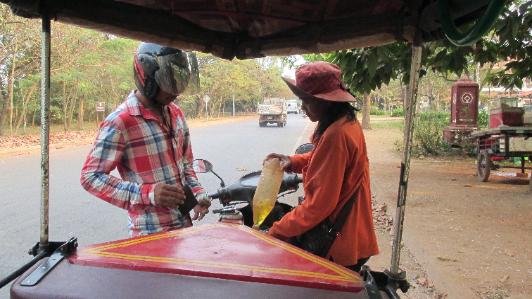
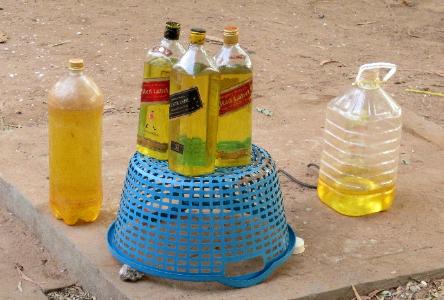
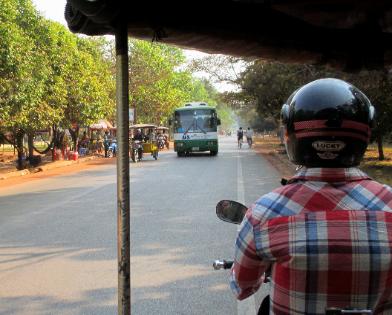
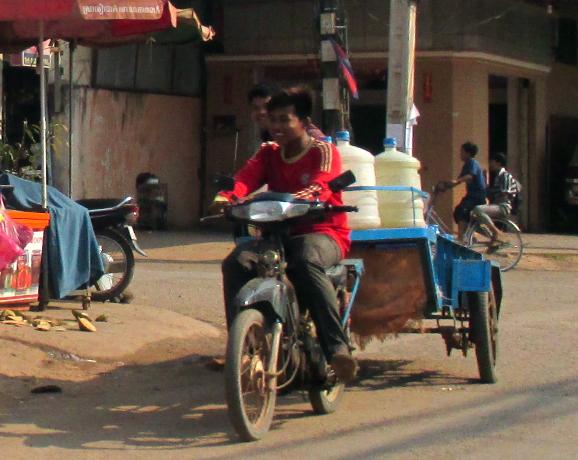
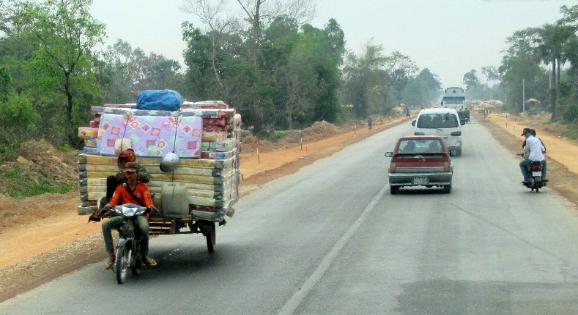
| Three on a bike is not uncommon -- and parents with kids sometimes fit as many as five! |
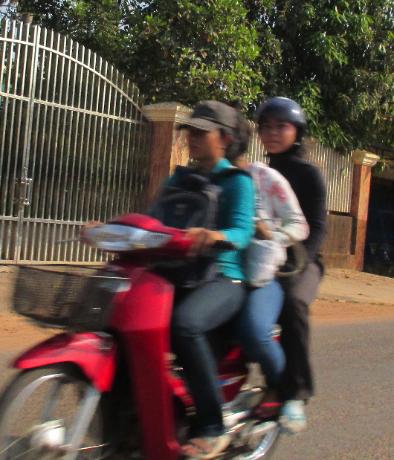
| As we near the lake, the landscape turns green with irrigated rice fields. Water buffalo graze on the half-flooded fields. |
| Homes are built on stilts -- a sure sign of just how rainy "rainy season" must be. You see these stilt homes all over Cambodia, not just near Tonle Sap Lake. |
| As we arrive, this kid takes OUR picture |
| We pass numerous fishermen casting their nets by hand |
| This floating home is particularly colorful and well assembled; you can see family members rowing from place to place and sitting on the front porch |
| Daily life on the water includes all the usual chores of cooking, cleaning, washing, and mending |
| This mom is giving her child a haircut |
| Our boat driver not only captains his boat but also lives aboard it |
| It feels good to take a break from temple viewing and spend a day on the water |
| Stacks of firewood rest on stilts above the water amidst mounds of fishing nets |
Tonle Sap is a giant freshwater lake that takes
up quite a bit of Cambodian real estate --
especially in the rainy season when it swells to
more than five times its usual size. It goes from
2,700 to 16,000 square kilometers and increases
in depth from 1 to 9 meters! This huge change
in size means that the best type of home to own
is a floating one that can move twice a year so
as to adjust to rising and falling water levels.
For this reason the largest freshwater lake in
Southeast Asia is home to some very unusual
floating villages. They're easily reachable from
Siem Reap; a one-hour tuk-tuk ride brought us
to the northern tip of Tonle Sap where a river
feeds into the lake. Here we boarded a boat and
passed dozens of fishermen casting nets by
hand. Soon the river widened and we came to a
whole village of ramshackle floating homes.
Boats putt-putted back and forth. Women rowed
from one part of their home to another. Kids in
particular seemed to be loving life on the water
as they steered motor boats, rowed home from
school, and frolicked about in splashy bliss.
up quite a bit of Cambodian real estate --
especially in the rainy season when it swells to
more than five times its usual size. It goes from
2,700 to 16,000 square kilometers and increases
in depth from 1 to 9 meters! This huge change
in size means that the best type of home to own
is a floating one that can move twice a year so
as to adjust to rising and falling water levels.
For this reason the largest freshwater lake in
Southeast Asia is home to some very unusual
floating villages. They're easily reachable from
Siem Reap; a one-hour tuk-tuk ride brought us
to the northern tip of Tonle Sap where a river
feeds into the lake. Here we boarded a boat and
passed dozens of fishermen casting nets by
hand. Soon the river widened and we came to a
whole village of ramshackle floating homes.
Boats putt-putted back and forth. Women rowed
from one part of their home to another. Kids in
particular seemed to be loving life on the water
as they steered motor boats, rowed home from
school, and frolicked about in splashy bliss.
| Ya gotta love kids -- always curious and engaged |